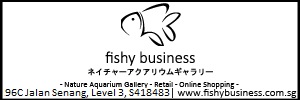What's wrong with my low light tank?
Have a newly reset tank (old gravel) which I drained, added some basefert and re-added the gravel which was made up of mixed mini pebbles and coral chips for african cichlids.
Plants grown are Anubias gigantea, A. Barteri nana, Microsorum pteropus and something that looks like Cryptocoryne alba. All these were tied onto driftwood and were grown emmersed when I bought them.
FL Light of unknown temperature rating, called daylight, 1 WPG, 10 hours daily
Tank Volume is 15 gal
OHF filter
No CO2.
Plants were introduced 5 days ago, plus a dose of 5ml seachem excel
2 days later, 1 crypt leaf turned black, trim off
2 days later, old leaves on the gigantea turning yellow with translucent spots, tips of java fern turning translucent.
1 day later, Yellowed Anubias gigantea leaves melting. Addition of 5ppm NO3 from KNO3 plus 2ml LGA didn't help, even more leaves of the A. gigantea turning yellow. Strangely, the nana and crypt looked OK.
Does the downdraft of the filter cause such problems?
Is this normal for these "hardy" plants to survive in such an environment? If not, what should I do? I'm setting this up for a relative who does not want to dose anything except fish feeding and water changes.
Warm regards,
Lawrence Lee
brothers, whatever is true, whatever is noble, whatever is right, whatever is pure, whatever is lovely, whatever is admirable--if anything is excellent or praiseworthy--think about such things.
Philippians 4:8










 Reply With Quote
Reply With Quote

 56f670="juggler"] I am not sure if A.gigantea needs higher lighting. The other Aponogetons species seem to favour "average-high" lighting when I checked in Tropica. Can't help you on this one.[/quote:da
56f670="juggler"] I am not sure if A.gigantea needs higher lighting. The other Aponogetons species seem to favour "average-high" lighting when I checked in Tropica. Can't help you on this one.[/quote:da


Bookmarks